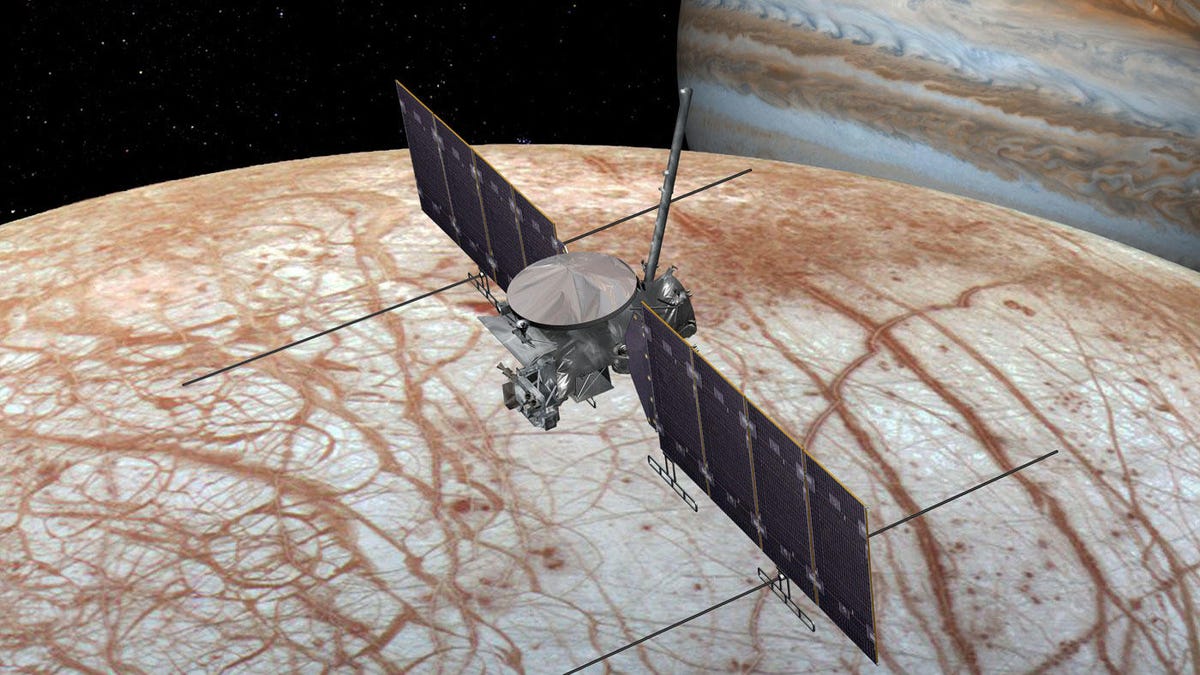SpaceX could send NASA to Jupiter's potentially habitable moon Europa
Congress has opened the door to a commercial rocket launching a NASA mission to deep space.

This NASA illustration shows the Europa Clipper above Europa, with Jupiter in the background.
A Falcon Heavy, or another big SpaceX rocket, could carry NASA's planned Europa Clipper mission to the icy Jupiter moon Europa, which hides a subsurface ocean many scientists think may be able to support alien life.
A draft of a congressional appropriations bill released Tuesday opens the door for Elon Musk's rocket company, or even a competitor like Jeff Bezos' Blue Origin, to provide the ride that'll send an orbiter to the Jovian system by 2025 and a lander to Europa by 2027.
"The National Aeronautics and Space Administration shall use the Space Launch System, if available, as the 10 launch vehicles for the Jupiter Europa missions," reads the draft bill from the House Appropriations Committee.
Those two little words -- "if available" -- are new. In the past, Congress has tied money for the Europa mission to a requirement that NASA use its Space Launch System. But SLS has been woefully behind schedule and over budget for years now. And SpaceX has been lapping NASA's in-house rocket development program recently, with the successful debut of the Falcon Heavy and the ongoing progress of its bigger Starship.
SLS is proving to be way more expensive than what SpaceX could offer, and it's not even clear it'll be ready to go by 2025 at this point.
The bill also provides over $400 million for NASA to build the Europa orbiter.
Of course, this is just a beginning in the budgetary process. Congress will continue to negotiate the actual amounts and terms of how much NASA will actually receive and for what. Still, this tiny change in an early document is an important acknowledgement that sticking with SLS may not be practical if the rocket won't be ready in time for a launch as soon as 2024.
The same bill also allocates funds for NASA's Artemis mission to return astronauts to the moon, though it offers less than half of what the White House has asked for.
The Trump administration has set a goal of sending the first woman astronaut to the surface of the moon by 2024, a goal that many inside the space industry are skeptical can be accomplished, particularly without the full support of Congress and its pocketbook.

